

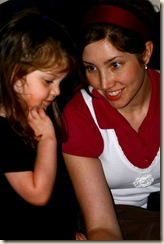




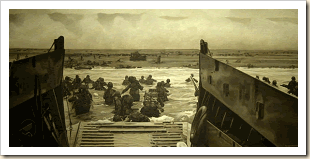
On June 5, 1944, General Dwight D. Eisenhower wrote this brief note, and then put it in his pocket, where it remained for the next few days:
“Our landings in the Cherbourg-Le Havre area have failed to gain a satisfactory foothold and I have withdrawn the troops. My decision to attack at this time and place was based upon the best information available. The troops, the air, and the Navy did all that bravery and devotion to duty could do. If any blame or fault attaches to this attempt it is mine alone."
By God's Providence, this message was never sent. If such a message had been sent, it would have signaled the defeat of the largest one-day invasionary force the world had ever seen, and the prolongation of a war that ultimately claimed the lives of over 400,000 American men and boys. The consequences of a defeat at Normandy are unthinkable. The possibility of failure was evidentially somewhat substantial, as evidenced by the very fact that Eisenhower wrote such a note.
A Story of Providence
The victory at Normandy is a story of God's Providential Hand in guiding and directing the events of that day, and the days and weeks leading up to it. The Allies had selected Normandy as the location of the invasion in a series of conferences held throughout the year of 1943. If the Allies had chosen Pas de Calais, as the point of invasion instead of Normandy, as the Germans had expected, the results would have likely been disastrous. Because of the German high command's belief that Calais would be the location of an Allied landing, in the fall of 1943, Hitler assigned to Gen. Erwin Rommel the task of strengthening the Atlantic Wall along the coast of France.
Operation Fortitude
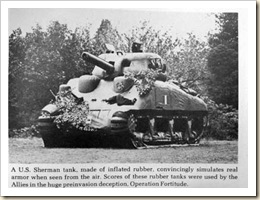
The reason the Germans believed the attack would occur at Calais was greatly due to a highly successful deception campaign dubbed Operation Fortitude. The purpose of this was to lead the Germans to believe that the main invasion of France would occur at Pas de Calais, thus keeping them from strengthening their defenses at Normandy. This was accomplished by a number of different means. One was the construction of 'dummy' trucks, tanks, artillery pieces, landing craft, etc. Another means used in Operation Fortitude was information leaks giving false information about the location of the planned invasion. Double agents were also used to send back false information to the Nazi intelligence agency. The transportation infrastructure in and around Calais was also bombed heavily during the weeks preceding the Normandy invasion.
A Fatal Mistake
Due to a dispute between Gen. Rommel and Gen. von Rundstedt, Hitler placed almost all of the Panzer tank divisions under his direct command, and located them just north of the Seine River, not far from where the Allies were expected to land at Calais. If Rommel had been allowed to have his way, the events of D-Day could have turned out much different than they did. On the morning of the 6th, Hitler didn't get up until after noon, and because the Panzers were under Hitler's direct control, the Panzer's weren't deployed to the site of the invasion until 4 o'clock that afternoon, which was much to late to turn the tide of the Allied forces moving inland from the beaches.
The Desert Fox
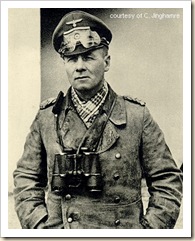
Another Providential event that occurred concerning the D-Day invasion was the unfavorable weather. Because of that, Gen. Rommel felt entirely secure in taking a few days leave to Germany for his wife's birthday. Although he was known as 'The Desert Fox', he let his guard down by believing that the Allies wouldn't possibly land an invasionary force under such adverse weather conditions. Had Rommel not been away at the time of the invasion, he might have been able to repel the invasion, or at least hold it back until the Panzer divisions could arrive.
The largest invasion
One can only imagine what went through the minds of the Nazi soldiers on Normandy when they saw the Allied fleet approaching. It was the largest one-day invasionary force that the world has ever seen; over 7,000 ships and landing craft, manned by over 195,000 crew; with over 132,000 troops landing on the beaches of Normandy just on the first day. By the 30th, 3 weeks later, over 850,000 Allied troops had landed at Normandy. The invasion of Normandy was truly an amazing feat of complex planning and preparation.
The Landing

The invasion was divided into 5 different beaches; Juno was to be taken by Canadian forces, Gold and Sword by British troops, and Utah and Omaha were to be taken by U.S. forces. The landing began at 6:30 AM. I won't go into the details of what took place at each location, but the stories of courage and valor from the beaches of Normandy are truly remarkable. One such story is the story of Walter D. Ehlers, whose story can be read here, taken from the book Medal of Honor: Portraits of Valor Beyond the Call of Duty.
The Longest Day
Last Saturday we watched the 1962 movie about D-Day, The Longest Day. Produced by Darryl Zanuck, The Longest Day features an all star cast including John Wayne, Robert Mitchum, Henry Fonda, Eddie Albert, Red Buttons, Curt Jurgens, and 36 other international stars. It's one of those rare movies that for the most part stays true to the historical record.
There is one exception I take with the movie, and that's when it portrays the climbing of Point-du-Hoc as fruitless because when they got to the top they discovered that the guns they were sent to destroy were not there. But if they hadn't climbed the cliffs, they wouldn't have been able to find where the guns had been moved and destroy them. If the guns had remained intact, they would have been able to reek incredible havoc on the beaches with a rain of artillery, which would have been devastating to the efforts of the main forces to get off the beaches and move inland. So the climbing of the cliffs by the boys of Point-du-Hoc was definitely not fruitless.
If you've never seen the movie, I highly recommend that you get it, because it really helps you to envision what it looked like on D-Day. Here's the trailer for the film:
War Stories III: The Heroes Who Defeated Hitler
Oliver North's book War Stories III provides an excellent synopsis on the war in the European theatre. And it also comes with a DVD containing an episode from Oliver North's TV show War Stories.
I also recommend the book Medal of Honor: Portraits of Valor Beyond the Call of Duty. It tells the stories of 138 living or recently deceased men who were awarded the Medal of Honor for courage and valor beyond the call of duty. Each Medal of Honor recipient's story is told in a two-page format with wartime photos as well as recent photos taken for this book.
One last thing I recommend to read is President Ronald Reagan's Boys of Pointe-du-Hoc speech given on June 6, 1984 commemorating the 40th anniversary of D-Day. The text of the speech can be read here.
Posted by Joe at 6/16/2008 01:41:00 AM 2 comments
Labels: Books, D-Day, History, Movies, World War II
"Suppose a nation in some distant region should take the Bible for their only lawbook, and every member should regulate his conduct by the precepts there exhibited!... What a Utopia; what a Paradise would this region be!" ~ President John Adams
Posted by L.T.W. at 6/06/2008 11:32:00 PM 0 comments
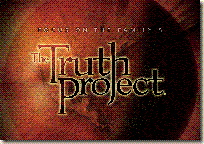
This week our church started doing Focus on the Family's Truth Project on Wednesday nights at 7pm. It's a 12-part DVD series hosted by Dr. Del Tackett, about the concept of truth, what it is, where it comes from, and why it's important. Throughout the lessons, video clips are shown from leading pastors, theologians, and authors such as R.C. Sproul, Sr., Ravi Zacharias, and Os Guinness. The primary focus of the study is to answer the fundamental question, "What is Truth?". From what I've seen so far, Focus on the Family has done an excellent job of answering that question, as well as teaching a comprehensive and systematic Biblical worldview. Dr. Tackett really hits the nail on the head when he says, "There is no direction you can travel, in which God has not spoken."
The first lesson, titled, Veritology: What is Truth?, laid the foundation for the rest of the study by defining the concept of Truth. Here's the basic outline for this lesson, taken from the TTP study guide:
1. Introduction - A Worldview Tour
2. Why was Jesus born? Why did he come into the World?
3. The Cosmic Battle - Spirit of Truth vs. Spirit of Falsehood
4. What is Truth?
5. Conclusion - "Do you really believe, that what you believe is really real?"
Posted by Joe at 6/05/2008 11:53:00 PM 0 comments
Labels: Church, Truth Project, Videos
Blog Template by: Nodethirtythree |